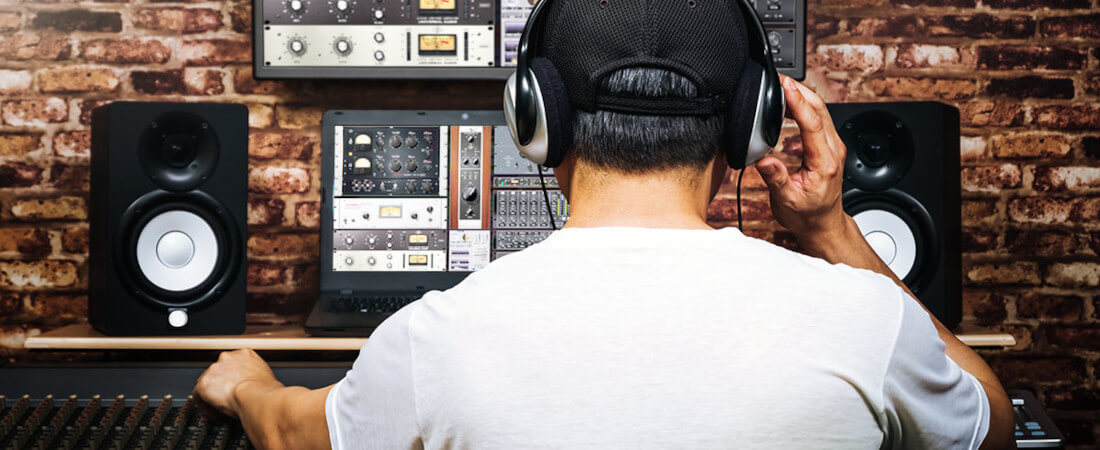HEADPHONES MIXING
» Mixing with headphones disadvantages
» Best Mixing headphones
Headphone mixing offers several benefits that make it a valuable tool in the music production process. Here are nine advantages of using headphones for mixing:
- Enhanced precision: Headphones provide a close and intimate listening experience, allowing for precise monitoring of individual elements within the mix. This level of detail can help identify subtle nuances, imperfections, and phase issues that might be harder to detect on speakers.
- Isolation from the environment: Mixing on headphones eliminates the influence of room acoustics, background noise, and reflections, which can affect the perception of the mix. This isolation enables the mixer to focus solely on the audio content, leading to more accurate judgments and decisions.
- Immersive stereo imaging: Headphones provide an immersive and accurate stereo image, allowing for precise panning and placement of instruments within the mix. This helps create a balanced and cohesive soundstage with excellent separation and clarity.
- Enhanced low-end monitoring: Headphones can provide a more accurate representation of low-frequency content, making it easier to discern bass elements and ensure a well-balanced mix. They can reveal subtle details and help prevent the masking of low-end frequencies.
- Privacy and flexibility: Mixing on headphones allows for privacy and flexibility, especially in environments where loud monitoring may not be feasible. It enables musicians, producers, and engineers to work at any time and in any location without disturbing others.
- Reference check: Headphones can serve as a valuable reference tool during the mixing process. By periodically switching between speakers and headphones, mixers can cross-check their decisions and ensure the mix translates well on different playback systems.
- Microdynamic detail: Headphones excel at reproducing microdynamic details, such as delicate transients, subtle fades, and nuanced performances. This level of detail can contribute to a more expressive and captivating mix.
- Mixing on a budget: Headphones provide a cost-effective alternative to investing in high-quality studio monitors and room treatment. They can deliver impressive accuracy and fidelity at a fraction of the cost, making them an accessible option for home studios or budget-conscious producers.
- Convenient for mobile setups: With the increasing trend of mobile music production, mixing on headphones offers portability and convenience. It allows for mixing on the go, whether in a coffee shop, during travel, or in a makeshift studio setup.
While headphones mixing has its advantages, it is important to note that it should be supplemented with occasional reference checks on studio monitors to ensure translation across different listening environments. Combining both monitoring methods can provide a comprehensive and well-balanced mix. This is what most professional mixing engineers are implementing when they are mixing in professional studios.
Mixing with headphones disadvantages
While headphones mixing offers numerous benefits, it also comes with a few disadvantages that should be considered:
- Limited perception of physical space: Headphones provide an immersive stereo image, but they lack the spatial cues and room reflections present in an actual listening environment. This can result in a mix that might not translate well when played back on different speakers or systems.
- Increased risk of ear fatigue: Extended periods of headphone use can lead to ear fatigue, as the sound is delivered directly into the ears. The lack of natural room acoustics and the close proximity of sound sources can strain the ears and potentially affect the mixer’s judgment over time.
- Inaccurate representation of bass frequencies: Headphones may not accurately reproduce low-end frequencies due to the absence of physical room interaction. This can lead to overemphasizing or underrepresenting the bass in the mix, making it challenging to achieve a balanced low-end response.
- Unreliable perception of dynamics: Headphones can sometimes exaggerate or mask dynamic elements in the mix. The close proximity of sound sources to the ears can make it difficult to accurately judge the impact and relative loudness of different instruments or passages, potentially leading to imbalanced dynamics.
- Limited cross-referencing ability: While headphones can provide a detailed listening experience, they lack the ability to accurately assess how a mix will translate to different listening environments, such as car stereos, home speakers, or club systems. Cross-referencing on studio monitors is essential to ensure a mix that translates well across various playback systems.
- Lack of shared listening experience: Mixing on headphones eliminates the collaborative aspect of listening and discussing the mix with others. Shared listening on studio monitors allows for input and feedback from multiple perspectives, potentially leading to better overall decisions and a more refined mix. Producing and mixing music is all about sharing your creative ideas to see how they will translate to other people. Sometimes your ideas might not be likeable to others and you will end up listening to your songs only by yourself.
Considering these disadvantages, it is advisable to incorporate a combination of headphone and studio monitor mixing, along with regular breaks to prevent ear fatigue and cross-referencing on different playback systems, to achieve a well-balanced and reliable mix.
Best mixing headphones
Choosing the best mixing music headphones is subjective and depends on personal preference, budget, and specific requirements. However, here are five highly regarded headphones commonly recommended for mixing:
- Sennheiser HD 600/650: The Sennheiser HD 600 and HD 650 are renowned for their accuracy, detail, and flat frequency response. They offer a spacious soundstage and are favored by many audio professionals for critical listening and mixing.
- Beyerdynamic DT 880 Pro: The DT 880 Pro headphones provide a balanced and transparent sound reproduction, making them suitable for mixing tasks. They offer a wide frequency response, excellent stereo imaging, and a comfortable fit for long mixing sessions.
- Audio-Technica ATH-M50x: The ATH-M50x is a popular choice among both professionals and home studio users. These headphones offer a well-balanced sound with detailed midrange, extended low-end, and accurate imaging. They are durable, foldable, and come at a more affordable price point.
- AKG K712 Pro: The AKG K712 Pro is known for its natural and spacious soundstage, making it suitable for mixing tasks that require precise imaging and instrument separation. These open-back headphones offer a flat response and a comfortable fit for extended listening sessions.
- Sony MDR-7506: The Sony MDR-7506 is a widely recognized industry standard for professional audio monitoring. These closed-back headphones provide accurate and detailed sound reproduction, making them suitable for mixing tasks across various genres.
It’s important to note that headphone selection is subjective, and individual preferences may vary. It’s recommended to try out different models and consider factors such as comfort, durability, and sound signature before making a final decision. Additionally, using studio monitors in conjunction with headphones is ideal for achieving a well-balanced mix.
Blog Articles
Mixing In Key Or Harmornic Mixing
Mixing in key refers to the practice of aligning the musical elements in a mix to ensure they are harmonically compatible. It involves considering the key or musical...
Using a reference track to improve your mixes
» Setting a benchmark » Developing a better ear » Improving your techniques » Avoid common mistakes Mixing is a complex process that involves balancing the different...
Using a limiter or clipper in music mixing and production
WHEN AND HOW TO USE A LIMITER MIXING MUSICAudio mixing and production involve a range of techniques and tools to shape the sound of a track. One essential tool in this...
Extras
Blog
Other News
Contact Page
About Us



